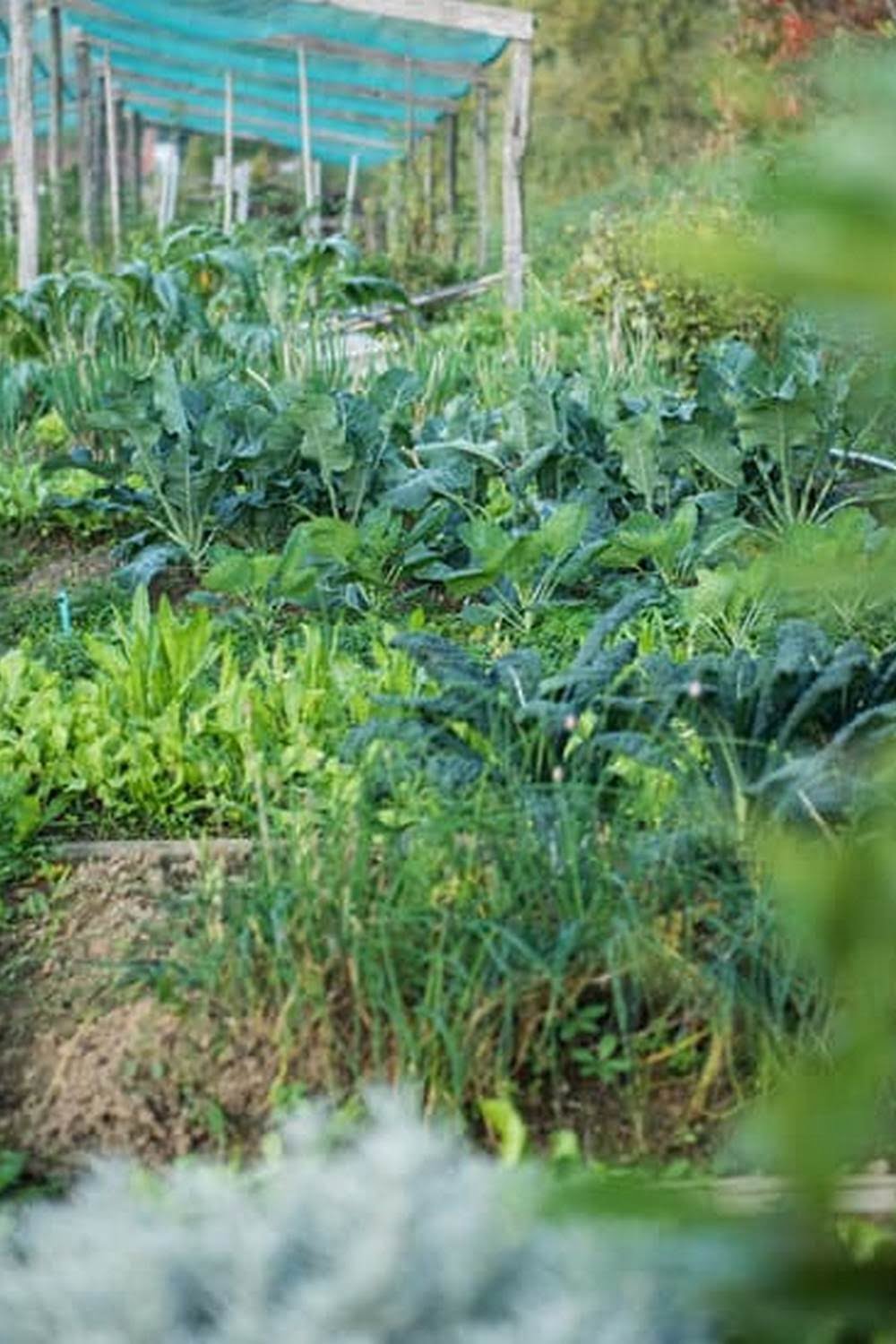Introduction
Hanging vegetable garden design is a type of gardening where vegetables are planted and grown upside down from a vertical support, such as a wall or overhead trellis. Hanging vegetable gardens can be used in both indoor and outdoor settings, depending on what types of vegetables you want to grow. Indoors, it is possible to use containers attached to the walls with colorful string or eye hooks. Outside, you may choose to construct a framework of wire or trellis that will hold the vegetables in their unique positions. A hanging vegetable garden is a great way to save space while growing fresh and nutritious vegetables all year long.
Benefits of Going Vertical with Your Garden
Having a hanging vegetable garden can provide many benefits. For starters, going vertical with your garden is a great way to free up space and make the most of small backyards or balconies. It also enables you to plant more vegetables within a smaller area, as well as spacing out plants to maximize growing potential and ease maintenance. Additionally, hanging gardens create height and texture in your landscape, adding an aesthetically pleasing structure to your outdoor space.
Moreover, growing vertically helps protect plants from certain pests that cannot climb or fly upward very easily. It also brings plants closer to natural light sources so they thrive more effectively – since air movement balances out evenly up against walls. Furthermore, having part of your garden at eye level allows you to monitor crop growth while performing routine maintenance – either making it easier to reach prune or harvest produce much quicker than normal ground-level gardening. Finally, adopting this method of gardening promotes better water drainage and irrigation control as less moisture will be present near the soil’s surface which minimizes risk of fungal diseases occurring due to overwatering or flooding.
Essential Supplies for Building a Hanging Vegetable Garden
Building a hanging vegetable garden can be a great way to save space while still growing fresh vegetables. Depending on the design chosen, you may need to invest in some supplies before you begin the project. Essential supplies for this type of garden typically include fasteners such as screws and dowels, soil and potting mixture, plant containers for hanging, trellis or other structural support. You may also need tools such as measuring tape and saws for cutting wood planks, trowels for digging around plants, safety goggles and gloves for protection when working with hand tools. Additionally, rubberized mesh containers or wire baskets are perfect for housing your container-grown plants along the wall. It’s important to research which plants require more space or extra levels of care like those that need frequent watering or additional sunlight before purchasing them so that your garden style is compatible with what the new plants will require. Plant hooks are another essential item if your design requires them; these must be sturdy enough to hold up their designated pots without causing any damage to walls or windowsills by providing excessive pressure
Inspirational Design Ideas for Adding Unique Character to Your Garden
A hanging vegetable garden is a great design idea for adding unique character to your garden without taking up valuable ground space. You can hang one in the corner of an unused terrace or along a balcony’s railing—anywhere that offers good light and plenty of moisture. There are many different designs available, ranging from simple single-basket hanging containers to more complicated structures that distribute plants along self-contained irrigation systems. Hanging baskets can hold flowering edibles such as cherry tomatoes, peppers, and squashes, while more elaborate systems may feature vines such as beans, squash, cucumbers and melons. If you plan on growing vining vegetables such as melons or gourds be sure to provide adequate weight support. The facility of being able to pick fruit and vegetables right off the railing right outside your kitchen window is truly priceless! Smaller herb gardens with clipped heirloom varieties look classic in wire baskets suspended over concrete surfaces. Even strawberries work well in a hanging environment–their shallow-rooted coils spread like friendly tendrils increasing the yield from a smaller area than when it grows in the long rows of traditional strawberry gardens. For urban gardens requiring low maintenance, use terra cotta liners for self watering reservoirs which keep roots nicely moistened even during dry spells. Synthetic fabrics serve as great substitutes for soil in most cases and offer superior drainage but are sometimes slower to warm up in spring time so timing is essential when transplanting seedlings into this type of medium.
Overcoming Common Challenges in a Hanging Garden
The biggest challenge associated with hanging vegetable garden design is how to ensure the plants are watered properly. This is especially difficult when dealing with an outdoor space that has little access to regular, consistent water sources. First, it is important to consider irrigation systems such as a timed drip system that connects with a hose bib and can be programmed to provide water at various times during the day. It is also important to choose container types that are designed specifically for hanging gardens so they contain reservoirs that can hold additional water. Adding soils with higher organic matter content will also aid in moisture retention and help keep plants from drying out as much. Lastly, installing shade cloth over top of the hanging garden can prevent soil from losing too much moisture through evaporation and keeping temperatures cooler for the plants.
Caring for and Maintaining a Hanging Vegetable Garden
Maintaining your hanging vegetable garden requires a few simple care steps that will ensure healthy vegetables during the growing season. Watering is essential to keeping your vegetables happy and healthy, and should be done frequently but with moderation. Try to water at the base of each plant and avoid getting the leaves wet as much as possible in order to prevent diseases and other problems. Deadheading is also important for promoting bushier plants and encouraging more abundant harvests. Additionally, avoid overcrowding the plants by thinning them out if necessary. Finally, make sure you are providing enough fertilizer to give your vegetables the nutrition they need to grow strong and produce vibrant fruit. With these simple steps, your hanging vegetable garden will remain lush and fruitful for years!
Conclusion
Hanging vegetable garden design can be an ideal solution for those with limited outdoor space or who want to maximize their garden production. By implementing vertical gardening techniques that allow you to plant vegetables below ground and on hanging structures, you can grow more variety of vegetables in small spaces. With a hanging vegetable garden design, it is possible to have colorful and tasty produce ready to pick while enjoying the beautiful views of your backyard. Not only will you reap the rewards of fresh produce, but you will also enjoy the aesthetic benefits of having an attractive area to relax and entertain. If you’re looking for a way to make the most out of your outdoor living space, a hanging vegetable garden may be just what you need.

If you’re looking to get into vegetable gardening, or are just looking for some tips on how to make your current garden better, then you’ve come to the right place! My name is Ethel and I have been gardening for years. In this blog, I’m going to share with you some of my best tips on how to create a successful vegetable garden.





